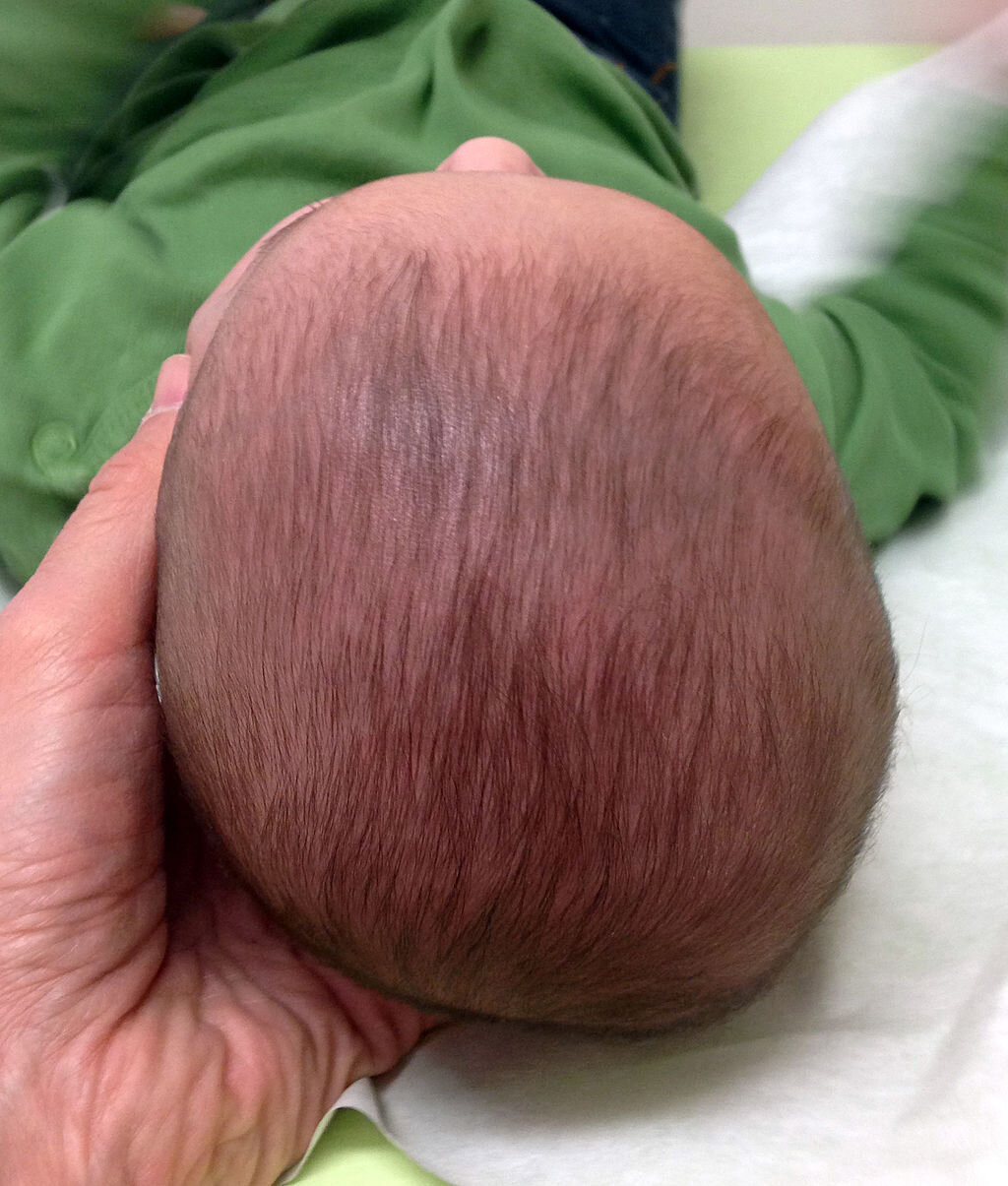Steffi & Jess are 2 Paediatric Physiotherapists from Flow Physio Co Sutherland and today they chat through Plagiocephaly.
What is Plagiocephaly (flat head)?
There are two types of “flat” head, plagiocephaly and brachycephaly.
Plagiocephaly - the back of the head is flat on one side
Brachycephaly - the back of the head is flat
The prevalence of babies getting a flat head has increased with the SIDS (sudden infant death syndrome) guidelines. Babies should be placed flat on their backs to sleep until 12months of age.
Following this guideline significantly reduces the risk of SIDS occurring. We would strongly recommend families to continue to follow this guideline as we have lots of other strategies to promote a round head shape.
What causes a flat head?
The flattening can be because of a few different reasons;
Sleeping flat on their back
Tight neck muscles/a mass in one their neck muscle (torticollis), or
Environment
Example of Plagiocephaly. Photo: Gzzz. Used with permission under license CC BY-SA 4.0
Due to the flattening, you may notice your baby’s ears may not be symmetrical or their forehead may have some bulging. Depending on the significance of this we may suggest more or less intervention.
When a baby is born there are “suture” lines along the skull and small openings called fontanelles, these allow for the baby’s skull to change shape and grow.
There are four sutures and two fontanelles. The fontanelle at the back of the skull closes at around 1-2 months and the fontanelle at the front of the skulls closes at around 9-18 months.
It is important that the fontanelles and sutures don’t close or fuse too early (craniosynostosis). This is something we would check for as it can significantly affect your baby’s head growth/shape/brain development.
What to check/look out for?
Looking at the back of your baby’s head: Does it look symmetrical and round from left to right? Is there flattening on one side?
Looking from the top at your baby’s head: Does it look symmetrical and round? Is there flattening on one side? Does the whole back of head look flat? Are their ears in line with each other? Is one of their ears pushed forward?
Looking at your baby’s face: Is their forehead symmetrical? Does one side of their forward bulge out?
If you notice any of the above, we would love to help give you strategies to improve your baby’s head shape and also assess to ensure early closing of sutures/fontanelles is not occuring.
What can you do?
Try to make all the environments your baby is in to be symmetrical, thinking about:
Cot and pram → do you always approach from the same direction? Try to switch it up, you can even turn your baby around in the cot (making sure to keep their feet at the end of the cot).
Are all the toys on one side? → Try to have them equally placed.
Do you think your baby has torticollis?
Check to see if they can look in both directions by gently turning their head. You can use a toy to guide their movement.
We can help show you which stretches are most important.
It is important that you are shown the correct stretches and do them gently.
Play
When your baby is awake, place them on their tummy.
This is the best position for development early in life
Make sure you supervise them when doing tummy time
Provides little or no pressure on the head
Steffi & Jess are 2 SENIOR Paediatric Physiotherapists WHO RUn OUR PAEDIATRIC SERVICE from Flow Physio Co Sutherland.
To book an appointment with Steffi or Jess, click the button below.
Source: Conservative interventions for positional plagiocephaly: a systematic review. Andrea E Bialocerkowski (a1), Sharon L Vladusic (a2) and Stephanie M Howell (a2) Volume 47, Issue 8. August 2005 , pp. 563-570


